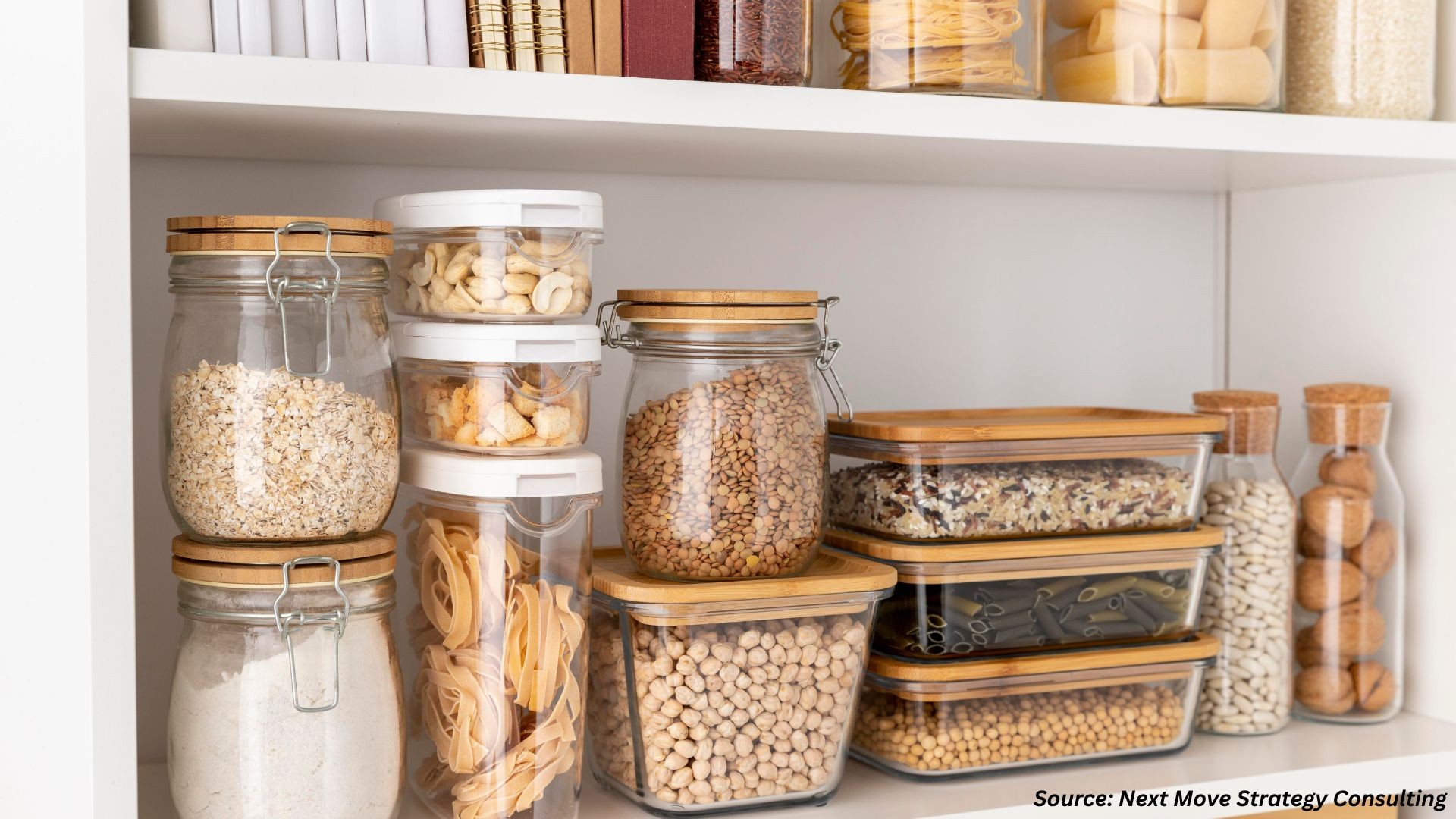
Cornmeal Market by Type (Organic and Conventional), by Product (Blue Cornmeal, Yellow Cornmeal, Stone-ground Cornmeal, White Cornmeal, Corn Flour, Corn Grits, Brewery Grits, Whole Grains, Ready-to-eat Cornmeal, and Others), by Granulation (Fine, Coarse, and Medium), by Application (RTE Corn-based Products, Beer, Animal Feed, and Others), by Class (Unenriched and Enriched) - Global Opportunity Analysis and Industry Forecast 2022-2030
Market Definition:
The Cornmeal Market size was valued at USD 752.3 million in 2021 and is predicted to reach USD 998.3 million by 2030 with a CAGR of 3.9% from 2022-2030.
Cornmeal is also known as corn flour which refers to dried corn kernels that are grinded into various textures such as fine, medium, and coarse. It is a staple food, which is also a by-product of corn in powder form. It is made from the dried maize that is soaked into a water solution with lime and further cooked, steeped, drained, and rinsed a couple of times to get the cornmeal. It is a good source of fibres enriched with food nutrients that includes potassium, iron, zinc, magnesium, and phosphorus.
Cornmeal is used to prepare dairy and confectionery products such as pancakes, muffins, bread, puddings, desserts, porridge, and waffles & rolls. It is also a healthy substitute for people that have celiac disease or have gluten sensitivity.
Market Dynamics and Trends:
The increasing use of the cornmeal in horticultural industry such as horticulture gardens and weed seeds that are grown effectively, to further prevent the damage to the existing plant system, trees, and shrubs drives the market growth. In addition, rapidly growing consumer awareness for gluten-free products is also expected to propel the cornmeal market, as cornmeal is manufactured from dry corn seeds and does not include any traces of barley, rye, or wheat.
Moreover, growing demand for craft beer and traditional beverages made using corn grits such as Chicha is one of the major factors that boosts the market growth. Furthermore, upsurge in the use of cornmeal as an innovative food coating in households and restaurants upsurge the cornmeal market. Additionally, increase in adoption of farming technologies such as vertical farming and weather tracking are further expected to drive the growth of cornmeal market.
However, the major contamination and changing climate factors causing fluctuations in the supply chain of cornmeal are expected to hinder the market growth. On the contrary, rising demand for tortilla chips, corn chips, and corn flakes as a snack and quick breakfast is expected to create ample growth opportunities for the market in the coming years.
Market Segmentations and Scope of the Study:
The cornmeal market is segmented on the basis of type, product, granulation, application, class, distribution channel, end-users and geography. On the basis of type, the market is classified into organic and conventional. On the basis of product, the market is divided into blue cornmeal, yellow cornmeal, stone-ground cornmeal, white cornmeal, corn flour, corn grits, brewery grits, whole grains, ready-to-eat cornmeal, and others. On the basis of granulation, the market is categorized into fine, coarse, and medium. On the basis of application, the market is segmented into RTE corn-based products, beer, animal feed, and others. On the basis of class, the market is bifurcated into unenriched and enriched. On the basis of distribution channel, the market is divided into wholesalers, retails, hypermarkets/supermarket, conventional stores, online, and others. On the basis of end-users, the market is classified into food processing, foodservice, feed industry, households, and others. Geographic breakdown and analysis of each of the aforesaid segments includes regions comprising of North America, Europe, Asia-Pacific, and RoW.
Geographical Analysis:
North America holds the lion share of cornmeal market size and is expected to continue dominating the market at present. This is attributed to the factors such as high consumption of cornmeal product that includes cornbread paired with a cheetos-flavored sauce and sandwich in the countries such as US, Canada, Brazil and Mexico. Also, growing demand for corn-based beverages such as Atole that nurtures and keeps the body hydrated is driving the growth of cornmeal market.
Moreover, rising cases of gluten intolerance and celiac disease especially in the US boost the market growth for cornmeal in this region. For instance, in 2020, according to Celiac Disease Foundation the incidence of celiac disease among women was 17.4 per 100,000. Whereas, as compared to 7.8 per 100,000 person-years among men. Celiac disease incidence among children was 21.3 per 100,000 person-years, compared to 12.9 per 100,000 person-years in adults.
On the other hand, Asia-Pacific is expected to show a steady rise in cornmeal market, owing to increase in patients with atherosclerosis' who require healthy and gluten-free tortillas made of cornmeal. Also, China ranks second in the global corn production along with India ranking fifth on the same list, this results in the diversity of cornmeal products that boosts the cornmeal market growth.
Moreover, the use of cornmeal in animal feeding such as cattle and chickens in the popular online platforms including Alibaba, Flipkart, and others are expected to drive market growth in this region.
Competitive Landscape:
The cornmeal market includes various market players such as General Mills, Inc., Jiminy's, Bunge Ltd, Archer Daniels Midland, Gruma, Cargill, Tate & Lyle, Andersons, Associated British Foods, and Bob’s Red Mill. These market players are adopting various joint venture strategies and planning expansion of business across various regions to maintain their dominance in the cornmeal market.
For instance, in March 2022, Jiminy's launched new human-grade treats: Nooch and Peanut Puffs, along with insect-based wet dog food such as Cravin' Cricket and Good Grub Entrée. Nooch Puffs treats are made out of natural ingredients such as cornmeal. It is healthy paired with low-calorie and an easy snack option. Moreover, in January 2018, Bunge Ltd acquired various corn mills from Grupo Minsa, S.A.B. de C.V. for the production of tortillas, tortilla chips, and others food items. It was a crucial strategy performed to strengthen the cornmeal food items.
Key Benefits:
-
The cornmeal market report provides the quantitative analysis of the current market and estimations through 2022-2030 that assists in identifying the prevailing market opportunities to capitalize on.
-
The study comprises a deep dive analysis of the cornmeal market trend including the current and future trends for depicting the prevalent investment pockets in the market.
-
The information related to key drivers, restraints and opportunities and their impact on the cornmeal market is provided in the report.
-
The competitive analysis of the market players along with their market share in the cornmeal market.
-
The SWOT analysis and Porters Five Forces model is elaborated in the study.
-
Value chain analysis in the market study provides a clear picture of the stakeholders’ roles.
Key Market Segments:
By Type
-
Organic
-
Conventional
By Product
-
Blue Cornmeal
-
Yellow Cornmeal
-
Stone-ground Cornmeal
-
White Cornmeal
-
Corn Flour
-
Corn Grits
-
Brewery Grits
-
Whole Grains
-
Ready-to-eat Cornmeal
-
Others
By Granulation
-
Fine
-
Coarse
-
Medium
By Application
-
RTE corn-based Products
-
Beer
-
Animal Feed
-
Others
By Class
-
Unenriched
-
Enriched
By Distribution Channel
-
Wholesalers
-
Retailers
-
Hypermarkets/Supermarket
-
Conventional Stores
-
Online
-
Others
By End-Users
-
Food Processing
-
Foodservice
-
Feed Industry
-
Households
-
Others
By Geography
-
North America
-
U.S
-
Canada
-
Mexico
-
-
Europe
-
UK
-
Germany
-
France
-
Italy
-
Spain
-
Rest of Europe
-
-
Asia-Pacific
-
China
-
India
-
Japan
-
South Korea
-
Australia
-
Rest of Asia-Pacific
-
-
RoW
-
UAE
-
Saudi Arabia
-
South Africa
-
Brazil
-
Remaining countries
-
KeyPlayers:
-
General Mills, Inc.
-
Jiminy's
-
Bunge Ltd
-
Archer Daniels Midland
-
Gruma
-
Cargill
-
Tate & Lyle
-
Andersons
-
Associated British Foods
-
Bob’s Red Mill
REPORT SCOPE AND SEGMENTATION:
|
Parameters |
Details |
|
Analysis Period |
2021–2030 |
|
Base Year Considered |
2021 |
|
Forecast Period |
2022–2030 |
|
Market Size Estimation |
Million (USD) |
|
Market Segmentation |
By Type (Organic and Conventional), by Product (Blue Cornmeal, Yellow Cornmeal, Stone-ground Cornmeal, White Cornmeal, Corn Flour, Corn Grits, Brewery Grits, Whole Grains, Ready-to-eat Cornmeal, and Others), by Granulation (Fine, Coarse, and Medium), by Application (RTE Corn-based Products, Beer, Animal Feed, and Others), by Class (Unenriched and Enriched), by Distribution Channel (Wholesalers, Retailers, Hypermarkets/Supermarket, Conventional Stores, Online, and Others), and by End-Users (Food Processing, Foodservice, Feed Industry, Households, and Others) |
|
Geographical Segmentation |
North America (U.S., Canada, Mexico) Europe (UK, Germany, France, Italy, Spain, Rest of Europe), Asia-Pacific (China, India, Japan, South Korea, Australia, Rest of Asia-Pacific), Rest of the World (UAE, Saudi Arabia, South Africa, Brazil, Remaining countries) |
|
Companies Profiled |
General Mills, Inc., Jiminy's, Bunge Ltd, Archer Daniels Midland, Gruma, Cargill, Tate & Lyle, Andersons, Associated British Foods, and Bob’s Red Mill. |




















 Speak to Our Analyst
Speak to Our Analyst

























